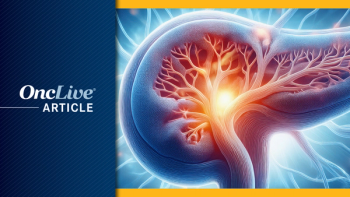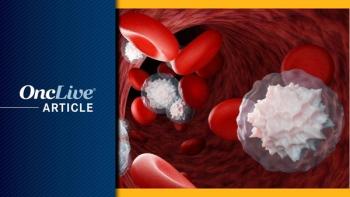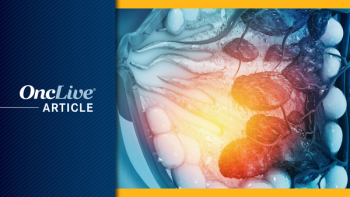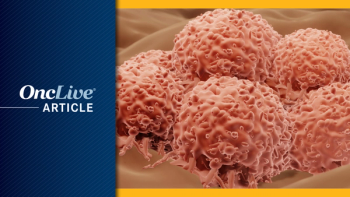
Supplements and Featured Publications
- Research Underway for MYC-Amplified Relapsed or Refractory Solid Tumors
- Volume 1
- Issue 1
Novel CDK9 Inhibitor Under Investigation in Solid Tumors and NHL
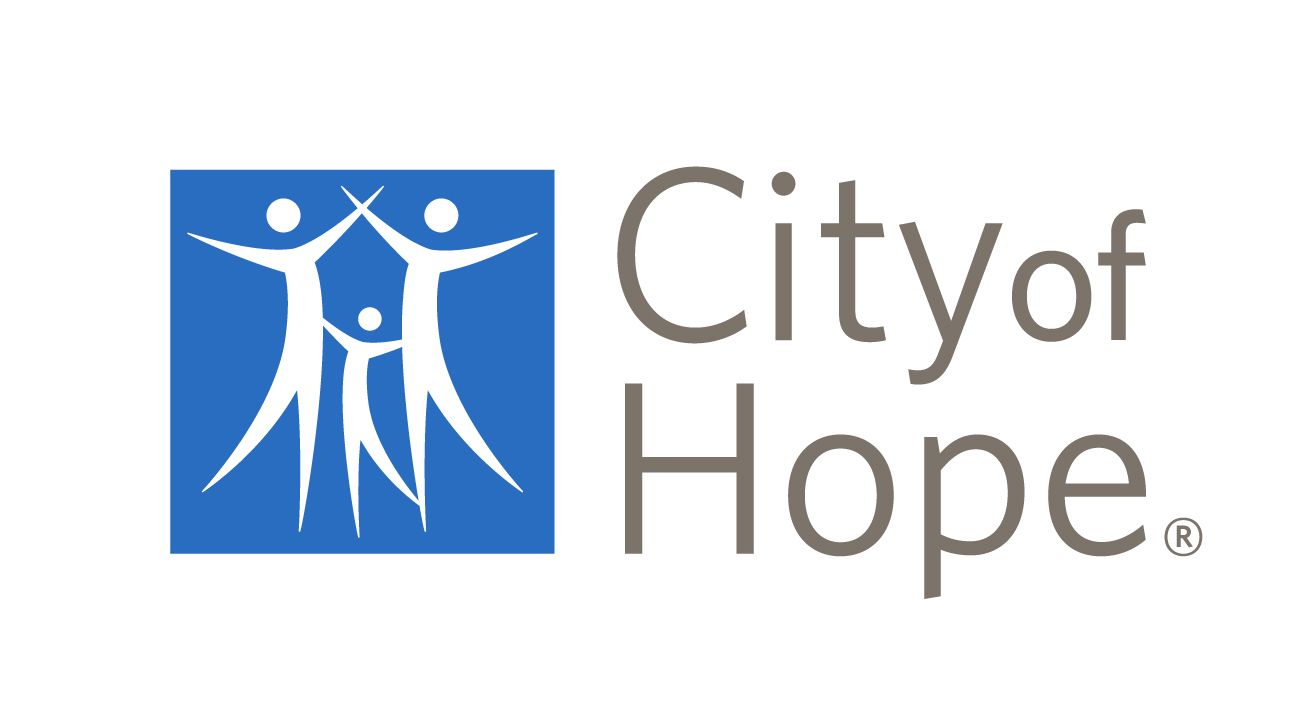
Miguel Villalona-Calero, MD, discusses the unique mechanism of action of KB-0742 and the rationale and design of a phase 1 trial investigating the safety and efficacy of KB-0742 in patients with relapsed/refractory solid tumors or non-Hodgkin lymphoma.
KB-0742, a novel CDK9 inhibitor, may provide more potent on-target tumor activity with decreased toxicities in patients with relapsed/refractory lymphoma or solid tumors such as breast cancer, ovarian cancer, and lung cancer, according to Miguel Villalona-Calero, MD.
The agent has demonstrated early efficacy in preclinical models of triple-negative breast cancer (TNBC), ovarian cancer, and diffuse large B-cell lymphoma (DLBCL) with high MYC expression. For instance, in 2 patient-derived organoid models with TNBC, KB-0742 showed maximal inhibition rates of 100% and 89%. Additionally, in lymphoma-derived cell lines, treatment with the agent led to tumor growth inhibition of over 50%, including a tumor growth inhibition rate of 56% in a model of double-hit DLBCL.1
An ongoing phase 1 dose-escalation and -expansion trial (NCT04718675) is investigating the safety and efficacy of KB-0742 in patients with relapsed/refractory solid tumors or non-Hodgkin lymphoma (NHL) with no other available therapeutic options. Tumor types of interest include small cell lung cancer (SCLC), non–small cell lung cancer (NSCLC), ovarian cancer, TNBC, soft tissue sarcoma, and NHL.2
“An agent with versatility is welcome,” Villalona-Calero said in an interview with OncLive®. “Demonstrating that we can engage the target at tolerable concentrations is a big plus. An oral agent with a longer half-life is also welcome.”
In the interview, Villalona-Calero discussed the unique mechanism of action of KB-0742, the rationale and design of the phase 1 trial, and the potential implications of this agent on clinical practice across solid tumor types and lymphomas.
Villalona-Calero is director of the Early Phase Therapeutics Program, co-program leader of the Developmental Cancer Therapeutics Program, and a professor in the Department of Medical Oncology & Therapeutics Research at City of Hope in Duarte, California.
OncLive®: What is the role of MYC as an oncogenic driver?
Villalona-Calero: MYC is a transcription factor. It’s present, active, [and] amplified in several malignancies, ovarian cancer in particular. In many patients with ovarian cancer, when we do molecular analysis, we find that MYC is amplified. TNBC, SCLC, and, notoriously, double-hit lymphoma, also have MYC [amplification]. There are a few different kinds of MYC [oncogenes, including] N-MYC and C-MYC. In ovarian cancer, [for example], we are concentrated on C-MYC, whereas in certain tumors like neuroblastoma, N-MYC is the one that plays a role.
How is CDK9 hypothesized to be related to MYC expression and function?
CDK9 is a MYC distal super enhancer. It phosphorylates RNA polymerase II and regulates the transcription of key oncogenes like MYC. Other oncogenic transcription factors are also influenced by CDK9 as a cofactor.
What is the mechanism of action of KB-0742, and how does this agent differ from other available agents?
Key factors of importance for this compound are that it’s oral, which is welcomed by patients [as an aspect that increases] quality of life, and it has a long half-life. With certain drugs, sometimes [patients] require a higher dose over a shorter period to hit the target, which implies that [the drugs will also] hit things that are not the target, [demonstrating] off-target action. And then, the target action is sometimes limited, [as the drug] doesn’t stay to downregulate the target for a long time.
This drug, based on the preclinical data we have available, has a long half-life, and therefore stays and interacts with the target for longer. It also has selectivity, so it has fewer off-target effects compared with other agents.
What have preclinical studies shown with KB-0742?
It has antitumor activity in TNBC, which is 1 of the targeted cancers for our expansion cohorts, and in NSCLC. [Its] activity and [how it] engages the target looked promising. [We have a couple of methods] for evaluating how it’s interacting with the target. One is looking at serine phosphorylation. We can also look at the downregulation of downstream target genes. Preclinically, the drug showed engagement of the target and activity when the target was engaged.
What are the key objectives of the first-in-human phase 1 trial of KB-0742 in patients with relapsed/refractory solid tumors or NHL?
Because [this trial has] a dose-escalation part followed by an expansion part, the main objective is to find the maximum-tolerated dose. This is typical of most phase 1 trials. Once that is determined, [we will begin the] exploration part, with the main goal of investigating [its] activity in particular cohorts of tumors.
Another objective in phase 1 trials is [determining the drug’s] engagement of the target. We obtain blood work to look at pharmacokinetics, how [the drug] behaves in the body. [It is also important to] get paired tumor biopsies so we can [determine whether the] compound is doing what it’s supposed to do in the tumors.
We are almost there. We hit what we thought was a good dose that engaged with the target and moved forward into the expansion cohorts. However, we continued exploring a little more to see if we could give slightly higher doses. Nevertheless, the expansion cohorts are open and accruing at this point.
What are the eligibility criteria for this trial?
[This trial has] typical criteria. [Patients need] to have measurable disease per RECIST criteria, just to explore the secondary objective of antitumor activity. [They also need] good organ function. We look at the liver and the kidneys, [and we require a] creatinine clearance of 60 [mL/min] or better. [Patients also need to have] a solid tumor that has progressed on prior therapies. However, we’re also including lymphoma.
Although this agent is still early in development and phase 1 investigation, if these data prove positive, how could this CDK9 inhibitor fit into the treatment paradigm for various tumors?
The ability to target a broad array of tumors that are regulated by transcription factors is a big [advantage]. We need an agent that has versatility. In the expansion cohorts, we are investigating different tumors like TNBC, lung cancer, and ovarian cancer, in which MYC has been identified as 1 of the potential drivers. [We’re also investigating] other tumors that have transcription factor fusions, for example, certain sarcomas like Ewing chordoma sarcomas.
What is your main message for colleagues regarding KB-0742?
We have a drug that is potentially active in many kinds of tumors. We would like to accrue more patients with TNBC into the trial. At this point, we haven’t had many patients with that indication referred to the trial. That is to be explored.
[In this trial], I will be concentrating on lung cancer, and other investigators who are collaborating with me on are concentrating on sarcomas. Interestingly, sarcomas tend to occur in teenagers, and some trials do not allow [teenagers, as patients need to be] adults to participate. However, this trial allows patients to participate if they are 12 years or older. That’s another area we need to explore, and we welcome any referrals.
References
- Day MA, Saffran DC, Hood T, et al. KB-0742 is active in preclinical MYC high models of TNBC, ovarian, and DLBCL cancers. Cancer Res. 2022;82(12_Supplement):2639. doi:10.1158/1538-7445.AM2022-2639
- A dose escalation and cohort expansion study of KB-0742 in participants with relapsed or refractory solid tumors or non-Hodgkin lymphoma. ClinicalTrials.gov. Updated February 15, 2023. Accessed March 10, 2023.
https://clinicaltrials.gov/ct2/show/NCT04718675
Articles in this issue
over 2 years ago
Dr Luo on the Potential Use of KB-0742 In MYC-Amplified Tumorsover 2 years ago
Dr Van Tine on the Investigation of KB-0742 in R/R Solid Tumorsalmost 3 years ago
Dr. Villalona-Calero on KB-0742 in Solid Tumors and NHL


